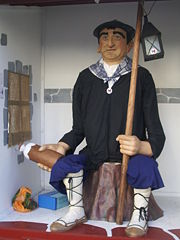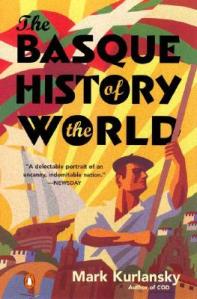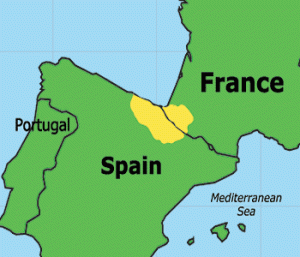 I admit to being a follower of author Mark Kurlansky, beginning with his history of salt and then following with his book, Cod. Innocent bystanders were subjected to my little-known salt facts for days on end, In fact, I read his book twice. Now, I have discovered another gem, The Basque History of the World: The Story of a Nation.
I admit to being a follower of author Mark Kurlansky, beginning with his history of salt and then following with his book, Cod. Innocent bystanders were subjected to my little-known salt facts for days on end, In fact, I read his book twice. Now, I have discovered another gem, The Basque History of the World: The Story of a Nation.
According to Kurlansky, just about everything we have that is good in the world originated with the Basque people, a very small region in southern France and northern Spain. Coincidentally, the Camino de Santiago’s route–another of my recent obsessions– is largely in the Basque region. He says the Jesuits began with two Basque men; steel was manufactured for all of Europe with raw materials from Basque; Basque whalers were early explorers of the new world; and the Basques recognized the value of chocolate from the New World.
 The Basques also have a unique Christmas figure–the coal man. My ears perked up as I was listening to my audio book. The figure is called the “Olentzero.”
The Basques also have a unique Christmas figure–the coal man. My ears perked up as I was listening to my audio book. The figure is called the “Olentzero.”
Here is information from one resource, Buber’s Basque Page: On Christmas Eve, throughout virtually all the towns in Euskadi, the figure of a shepherd or a coal man is lifted up, sitting in a basket, onto the shoulders of people who take it from house to house throughout the town or village, and at every house that it passes, the young people that accompany the Olentzero stop to sing a Chrismtas carol.
In Navarra, for example, the Olentzero is a coal man who comes down from the mountains to hand out chestnuts and wine, and of course presents for the little ones.
The Olentzero is a mythical Basque character: he is a messenger, a shepherd who cries out that it is Christmas time throughout all the corners of the Basque Country. But he is not only a shepherd; in some parts of Euskadi he is a farm worker and in other parts he is the coalman, but all of them have in common the fact that they bring good news.
But the Olentzero has also always been associated with many other beliefs, such as the deeply rooted Basque cuisine. In Salvatierra in Alava, for example, the Olentzero is a coalman, who after having lived a hard life up in the mountains, comes back to his village to bring good news and at the same time to have a good feast to make up for the hunger which he has suffered.
This mythical character has a big head, a large belly and according to local traditions is capable of drinking ten “arrobas” (one arroba is about twenty-five pounds in weight) of wine. In Hondarribia apart from carrying a pipe, a capon, some eggs and a bottle of wine, he usually has a tail made of cod, and if a permanent Olentzero is erected in a village, a barbecue is usually set up next to him where sardines are handed out free of charge to the onlookers.
Much to Roger’s chagrin, I love sardines. I would like to adopt this Coal Man–find a figurine to add to our tree or nativity. By the time I finish the audio book, I’m sure I’ll want to be Basque.